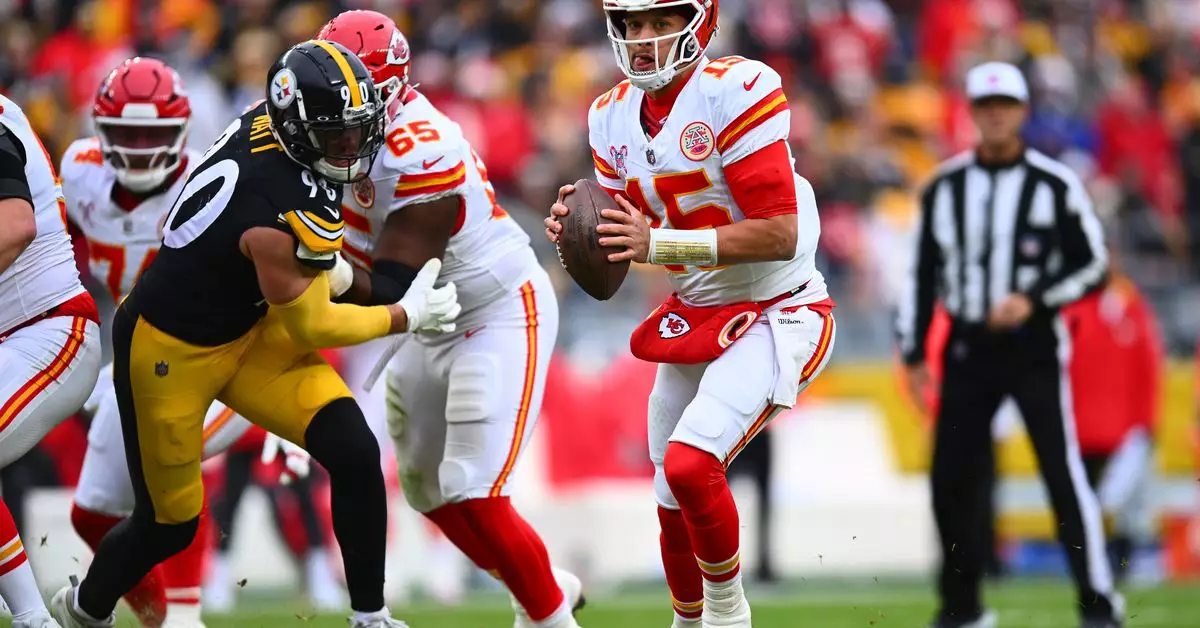In a landmark event for both Netflix and professional football, the streaming giant achieved significant milestones during its live broadcasts of NFL games on Christmas Day. Nielsen ratings revealed that these matches become the most streamed NFL games in U.S. history, drawing astonishing average minute audiences (AMA). Specifically, the Kansas City Chiefs and Pittsburgh Steelers game reached an AMA of 24.1 million viewers, while the Houston Texans’ clash with the Baltimore Ravens surpassed them slightly with 24.3 million viewers. Collectively, these events attracted nearly 65 million total viewers, showcasing Netflix’s ascendancy in the realm of live sports broadcasting.
While Netflix experienced challenges in a previous live event featuring a boxing match between Mike Tyson and Jake Paul—where the service struggled under the weight of over 60 million tuned-in households—it seems to have learned from past experiences. During the NFL games, the platform’s streaming infrastructure demonstrated remarkable resilience. Despite the high viewer count and the simultaneous star-studded performances by icons like Mariah Carey and Beyoncé, Netflix’s systems managed to hold strong without significant disruptions.
In addition, Netflix’s strategy for enhancing viewer engagement was evident in its quick move to release a standalone replay of the “Beyoncé Bowl” halftime show, which, at its peak, garnered a staggering 27 million live viewers. This foresight not only caters to the audience’s desire for exclusive content but also underscores Netflix’s commitment to delivering quality entertainment beyond the game itself.
The NFL’s deal with Netflix ensures that Christmas Day games will remain a fixture on the platform for at least the next two years, signifying a growing trend where traditional sports broadcasting increasingly overlaps with streaming services. This shift might redefine how fans engage with live sports, moving away from conventional television to on-demand streaming, and opens the door for other major leagues, potentially changing the landscape of sports viewership forever.
Simultaneously, the NBA reported its own triumphant Christmas Day, noting that, despite the Netflix broadcasts, its games experienced the highest viewership in five years, averaging 5.25 million viewers per game in the U.S. Notably, all five NBA games saw increases in their audience compared to previous years, leading to an impressive overall viewership surge of 84 percent year-over-year. Such statistics indicate a growing appetite for live sports, suggesting that audiences are diversifying their viewing preferences and potentially gravitating toward platforms that offer a comprehensive sports package.
As more viewers flock to streaming services like Netflix for live sports, the implications extend beyond mere viewer figures. The enduring battle for supremacy among traditional broadcasters and streaming platforms lays the groundwork for a dynamic future. With the NHL evolving its reach, the NFL solidifying its streaming partnerships, and the NBA showcasing adaptability amidst competition, the landscape of sports viewership is undoubtedly transforming.
Netflix’s successful foray into live NFL broadcasts on Christmas Day represents not only a remarkable achievement in streaming history but also signals a seismic shift in how sports can be consumed in the 21st century. With technology advancing and viewer preferences evolving, the future of sports broadcasting looks increasingly digital and highly competitive.

